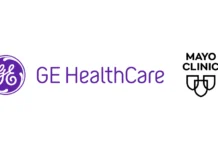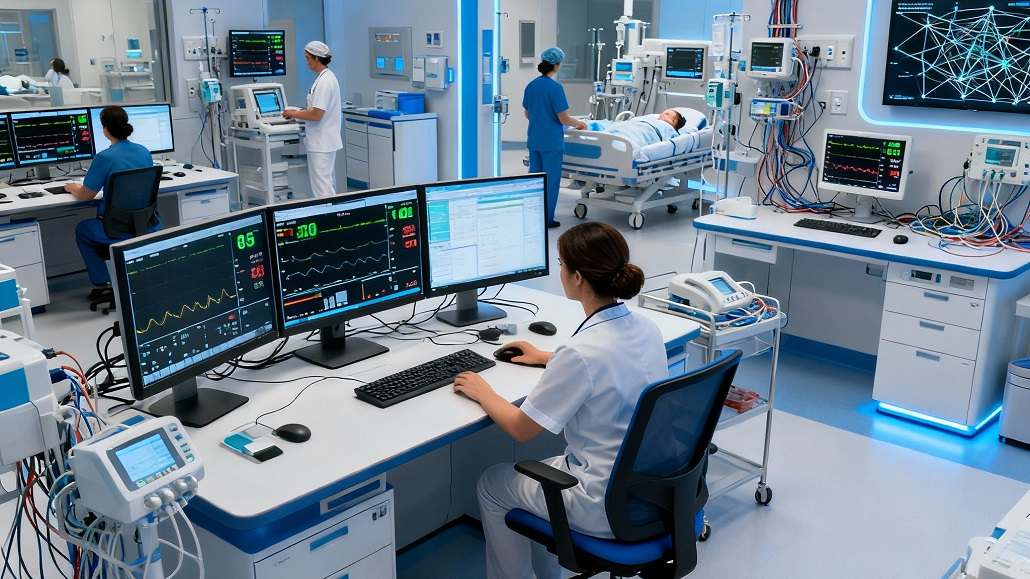Healthcare’s transformation into a hyperconnected clinical technology ecosystem has created unprecedented opportunities for improved patient care alongside profound security challenges that demand immediate executive attention. While healthcare leaders focus extensively on cybersecurity for electronic health record systems, billing infrastructure, and enterprise networks, a parallel universe of connected medical devices operates with dramatically lower security standards and often receives insufficient executive oversight. This gap between enterprise cybersecurity vigilance and healthcare executive medical device security governance represents one of the most consequential but overlooked risks in modern healthcare organizations.
Medical devices ranging from infusion pumps and ventilators to imaging equipment and patient monitors increasingly incorporate network connectivity, wireless communication, and sophisticated software enabling remote monitoring and clinical integration. The Internet of Medical Things (IoMT) promises transformative improvements in patient care by enabling real-time monitoring, predictive analytics, and integrated clinical workflows. Yet this connectivity simultaneously introduces attack surfaces, vulnerability points, and patient safety risks that healthcare executives must understand and actively manage. Unlike enterprise IT systems where chief information officers exercise clear governance authority, medical device oversight often remains fragmented across biomedical engineering, clinical departments, purchasing committees, and manufacturer relationships with minimal executive coordination.
Understanding the Healthcare Executive Medical Device Security Landscape
The healthcare executive medical device security dimension encompasses technical cybersecurity challenges alongside clinical integration complexities, regulatory requirements, and patient safety implications distinct from general IT security concerns. Medical devices operate on different timelines than enterprise software systems. Clinical device updates may require FDA pre-market approval, extensive testing, and institutional validation before implementation. Devices manufactured years ago continue operating in clinical settings, often running decades-old operating systems incapable of receiving security patches. This creates persistent vulnerability environments where adversaries exploit known exploits against unpatched devices.
The clinical criticality of medical devices creates patient safety dimensions absent from other cybersecurity contexts. When enterprise IT systems experience compromise, organizations typically isolate affected systems and restore from backups, causing operational disruption but not immediate patient harm. When medical devices experience compromise, patient care becomes actively compromised. Ventilators receiving malicious commands could alter respiratory parameters endangering patient lives. Infusion pumps targeted by attackers could modify medication doses creating overdose scenarios. Imaging equipment corrupted by malware could produce false diagnostic images leading to incorrect clinical decisions. These patient safety implications elevate medical device security from IT concern to clinical imperative demanding executive engagement.
Healthcare executives historically approached medical device security as a vendor responsibility rather than organizational governance issue. Manufacturers claimed device security responsibility, while healthcare organizations focused on clinical performance and budgetary considerations. This approach created accountability gaps where security vulnerabilities persisted because no party bore sufficient responsibility for addressing them. Contemporary healthcare executive medical device security demands executive recognition that organizations bear ultimate accountability for clinical safety regardless of device manufacturer claims.
FDA Regulations and Executive Compliance Responsibility
The FDA’s increasingly stringent medical device cybersecurity requirements have transformed healthcare executive responsibilities regarding medical device governance. The FDA Premarket Guidance for medical devices requires manufacturers to demonstrate cybersecurity controls, threat assessment, and vulnerability management prior to market approval. Post-market guidance addresses manufacturer responsibility for addressing newly discovered vulnerabilities through patches and updates. However, healthcare organizations bear responsibility for implementing these patches, validating device functionality after updates, and managing clinical workflow disruptions accompanying security updates.
Healthcare executives must understand that FDA medical device regulations requirements extend organizational obligations beyond manufacturer responsibilities. Organizations cannot claim ignorance of vulnerabilities or attribute all security responsibility to manufacturers. Regulatory agencies increasingly investigate healthcare organizations’ medical device security governance, expecting executives to demonstrate active oversight of device security posture, patch management processes, and vulnerability responses. FDA enforcement actions increasingly name organizational leaders responsible for device security governance failures, creating direct executive accountability for device security decisions and negligence.
The FDA’s Software Bill of Materials (SBoM) requirements and artificial intelligence-related guidance create emerging compliance obligations for healthcare executives. As device manufacturers incorporate open-source software, third-party components, and AI-driven functions, healthcare executives must evaluate the security implications of these components and understand how updates or component vulnerabilities affect clinical safety. This demands technical literacy among healthcare leaders extending beyond general IT security concepts to encompass clinical device-specific concerns.
Governance Structures for Medical Device Security
Effective healthcare executive medical device security oversight requires clear governance structures defining responsibility, authority, and accountability for device security across clinical and IT functions. Many healthcare organizations operate without formal structures coordinating biomedical engineering departments, clinical informatics leadership, IT security teams, and clinical leadership around device security. This fragmentation creates vulnerability to gaps where device security concerns fall between organizational units with unclear responsibility.
Progressive healthcare organizations establish medical device security governance committees bringing together biomedical engineering directors, clinical informatics leaders, IT security executives, and senior clinical representatives. These committees establish policies addressing device selection criteria including security features, vulnerability management approaches, patch deployment processes, and incident response procedures specific to connected devices. Committees review device inventory regularly, identify aging equipment vulnerable to emerging threats, and recommend clinical technology refresh strategies balancing financial constraints against security requirements.
Healthcare executives should demand transparency into device inventory and security posture. Organizations should maintain comprehensive databases documenting all networked medical devices, their operating systems and software versions, known vulnerabilities, manufacturer patch status, and clinical dependencies. This inventory enables risk assessment, prioritization of devices requiring urgent security attention, and identification of devices unable to receive critical security patches due to clinical constraints or manufacturer support termination.
Medical Device Risk Assessment and Prioritization
With potentially thousands of connected medical devices operating across healthcare organizations, executives cannot implement identical security measures for every device. Strategic healthcare executive medical device security requires risk-based approaches prioritizing protective investments where patient safety risk is greatest. Risk assessment frameworks should evaluate clinical criticality (consequences if device fails), connectivity exposure (can device be accessed from external networks), vulnerability severity (how easily can device be compromised), and remediation feasibility (can device be patched or protected).
High-risk categories demand executive attention and resource allocation. Intensive care unit devices requiring continuous operation, devices controlling medication administration, devices producing diagnostic information guiding clinical decisions, and devices with direct patient physiological impact merit substantial protective investment. Network segmentation should isolate high-risk devices from standard organizational networks, limiting attacker access even if enterprise networks become compromised. Security monitoring should focus on devices where compromise creates greatest patient safety consequences.
Lower-risk devices with minimal clinical impact or limited external connectivity can often operate under standard organizational security policies with less specialized attention. However, organizations must resist dismissing any connected device as “not requiring security attention.” Attackers often exploit apparently low-risk devices as staging points for attacks against higher-value targets. Even devices with minimal direct patient safety impact warrant basic protective measures including network segmentation, access controls, and monitoring.
Balancing Security with Clinical Operations
Healthcare executives implementing healthcare executive medical device security programs must navigate inherent tensions between security requirements and clinical operations. Security best practices recommend regular patching and updates maintaining current security status. Yet device patches may require clinical validation, downtime, or workflow modifications disrupting patient care. Executives must balance security imperative with clinical operational reality, recognizing that patients cannot always tolerate treatment delays for security updates.
This tension requires governance frameworks establishing clear policies for device updates including processes distinguishing critical security patches requiring urgent implementation from routine updates permitting scheduling flexibility. Clinical teams should understand security requirements well enough to identify legitimate situations where temporary deviation from security standards proves necessary due to patient care priorities. IT security teams should understand clinical workflows sufficiently to identify security implementation approaches minimizing clinical disruption.
Vendor relationships require careful management to ensure device manufacturers provide necessary security patches, communicate vulnerabilities proactively, and support organizational device security governance. Healthcare executives should establish contractual requirements for vendor notification of vulnerabilities, patch availability timelines, and support for security configurations. Organizations must resist vendor pressure to accept unpatched equipment or to tolerate security gaps due to manufacturer business constraints.
Emerging IoMT and Connected Device Challenges
The expanding Internet of Medical Things introduces increasingly complex device ecosystems with interconnected sensors, cloud-based analytics, and sophisticated wireless communication. Wearable devices monitoring patient conditions, remote monitoring systems transmitting biometric data, and integrated clinical platforms connecting multiple device types create rich data environments enabling advanced clinical analytics alongside expanded attack surfaces and vulnerability complexity.
Healthcare executives must understand that traditional device security models prove insufficient for IoMT environments. Individual device security, while necessary, does not protect interconnected systems where compromise of one device can cascade through connected systems. IoMT security demands endpoint protection, network segmentation, encryption of data in transit, cloud platform security, and integration security addressing how data flows between systems. Executives overseeing IoMT implementations must demand comprehensive security architectures addressing entire systems rather than isolated devices.
Third-party cloud platforms storing and analyzing medical device data introduce additional governance complexity. Healthcare executives must ensure cloud vendors meet HIPAA requirements, maintain appropriate data protection, and provide transparency into data handling practices. Vendor management becomes increasingly critical as device ecosystems incorporate multiple commercial services, creating accountability chains where healthcare organizations remain ultimately responsible for patient data security despite delegating functions to external vendors.
Executive Accountability for Medical Device Patient Safety
Healthcare executives increasingly face direct accountability for patient harm resulting from compromised medical devices or inadequate device security governance. Regulatory agencies, legal systems, and institutional governance structures hold executives responsible for medical device security decisions affecting patient safety. Negligent governance creating vulnerability to device compromise can result in personal liability, professional consequences, and institutional penalties.
Healthcare executives should view medical device security oversight as core leadership responsibility equivalent to financial governance or clinical quality management. Boards of directors increasingly include medical device security in regular governance reporting, recognizing the strategic importance of device security to organizational risk management. Executives demonstrating sophisticated understanding of device security landscape and implementing robust governance frameworks position their organizations for resilience while protecting their own professional credibility.
Conclusion
Healthcare executive medical device security represents an emerging dimension of clinical leadership requiring executive engagement, technical understanding, and governance sophistication. The opportunity for medical devices to improve patient care is genuine and substantial. Realizing these benefits while protecting patient safety demands that healthcare executives move beyond viewing device security as vendor responsibility to embrace active governance oversight. Healthcare organizations implementing comprehensive medical device security governance frameworks—including clear accountability structures, risk-based prioritization, vendor management, and clinical integration—will be better positioned to harness connected device benefits while protecting patients from device-related security threats. For healthcare executives committed to patient safety and organizational resilience, medical device security governance represents both imperative and opportunity to demonstrate leadership excellence.


















